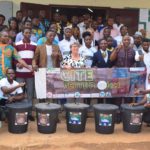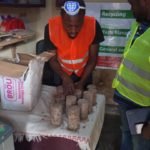
Green Culture Project
When culture was mandated as the 4th pillar of sustainable development by UNESCO, it exposed the gap that has been existing between people’s practices, beliefs and behavior vis-a-vis the environment. Any successful environmental sustainability measure is bound to a sham if the local context and way of life is not taken into consideration. Any conservation effort that is successful is basically because the people around that effort accepted it.
I grew up in a green environment, characterized by chunks of green spaces, created by nature and nurtured by culture – Sacred Forests. These are places that no one dares to go into. No one enters the sacred forest without being initiated and no one in the society dares to fetch wood in the sacred forests. Meaning that basically, any sacred forest area is automatically a green space.
The tendency have changed over the last 10 years, building on my empirical studies and google map images we have been taking over the years. These forests are disappearing, not because of direct Anthropocene, but because of climate change. If nothing is done around the Western Highlands of Cameroon, which harbors the water shed basin of the entire country and forms a a ‘protective belt around the Congo Basin Rainforests, then in some years to come, drought, famine and devastation will befall the area.
Activities
– Reforestation of sacred forests in the Western Highlands of Cameroon.
Planting of 20 000 tree species around sacred forests in the Western Highlands of Cameroon, which will have a double impact – fight climate change, but a also revive sacred forests which disappeared because of climate change.
– Protection of plant and animal species in sacred forests.
Once revived, the plant and animal species will naturally thrive. The idea being that any niche that will be created because of this will turn the area green and since no one fetches wood in such places, a natural conservation will be put in place.
– Revive extinct cultural practices that were supposed to be taking place in sacred forests.
Cultural practices used to take place in these sacred forests, keeping the people’s practices
Outcomes:
- Boost the watershed area.
- Fight against climate change as such a project will contribute to Cameroon’s INDC, specifically REDD+.
- Revive cultural practices that were extinct because of the disappearance of the sacred forest.
- reforestation.















